my world
home
|
Charmed by runes
|
|
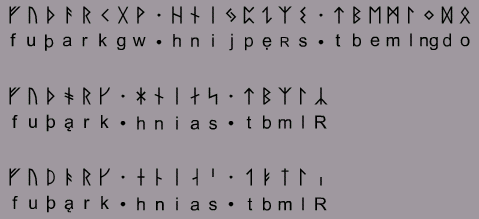
The name of the runic alphabet is the futhark, which is what the first six runes spell (i.e. using the same principle as in alpha-beta). The top row is the older or Gmc. futhark, used until about AD 800; the middle is the younger "ordinary" futhark, with only 16 characters; the bottom one is the younger short-twig futhark. Runes were used over a long period of time, roughly from AD 100-200 to AD 1800, probably for both monumental and quite ordinary purposes. In Bergen, Norway, loads of inscriptions on wood have been found, all of varied content ranging from business agreements and commercial contracts to spells and prayers and even private letters. |
I personally use runes for opinionated notes or general scribble. |
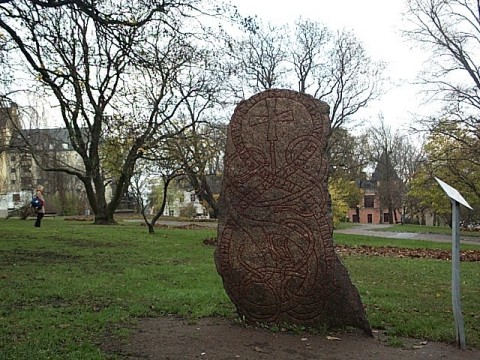
Rune stones were typically done in honour of some loved one who had passed away (for instance a son/brother/father who never came back from a Viking foray), although there are examples of guys who felt they should have one or more stones raised for them in time for themselves to see and appreciate them, like for instance shrewd Mr Vigmund on the Örby stone. Most often (meaning those who survived history) the monument consisted of a nice strong stone with one or more of its smooth surfaces covered with more or less intertwining and complicated ornaments. It was probably a costly project. |
I find this a particularly nice stone, with the surface nicely and proportionally covered. Note the dragon head biting the loop. The rune master had a good eye and probably did quite a bit of preplanning. |
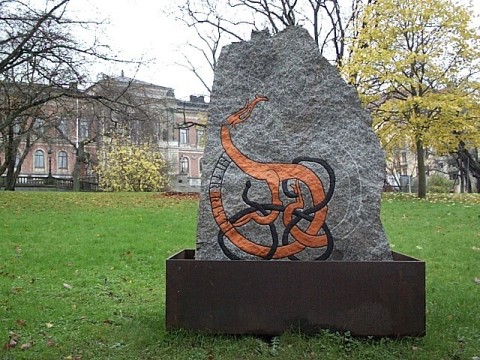
Traces of colour indicate that the rune stones were probably painted. One may assume that the stones were supposed to be eyecatching monuments worthy of admiration. They were probably placed where people would see them, for instance along main roads or at crucial crossroads. There are instances of a so called bridge where two stones were placed facing each other on either side of a road or passway. |
I guess by comparing the paint remains on the stones with what we know of the technology and resources of the Viking Age this could be a plausible stone look. No eyesore. |










Enjoy a selection of the stones to be found behind the cathedral and in the University Park of Uppsala. Of course they were originally placed elsewhere, but over the centuries they have been so pushed around that giving them a VIP position in town for people to enjoy them seems OK. After all: they were meant to be admired. |
There are a couple of magnificient rock carvings that I would have liked to include, but heavy rain prevented me from slushing out to the muddy little pasture where they're located. I'll have to wait some six months or so, when the weather is less unreasonable.
|
Up close
|

|
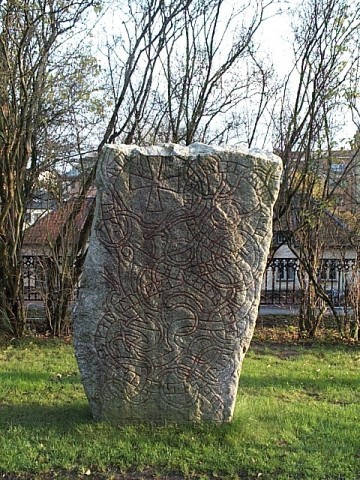
|
"...björn and Brand had the stone raised in memory of Karlung, their father, and Kättilbjörn in memory of (his) brother. Öpir carved the runes."
Öpir (latter part of the 11th century) is one of the most famous rune carvers; his trademark is the "3-looped" beast. He was probably a rather cocky guy, having acquired such a name: öpir means something like "loudmouth". |
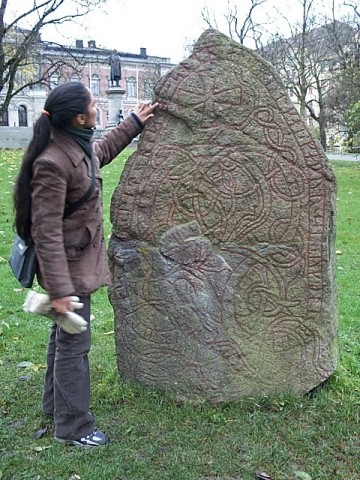
|
A rune stone should be felt when read. Usually (though not always) you start at the head of the runic beast and let your fingers work their way around the twisting and turning. |
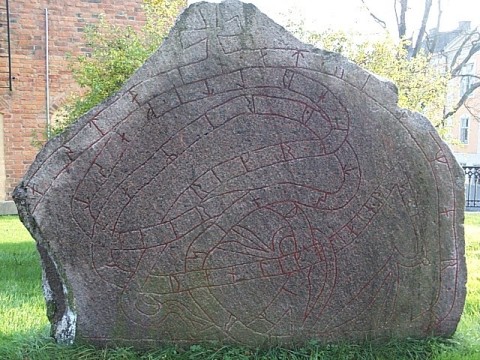
|
Despite its not so showy display, this stone is a bit of a headache: how the deuce did it get such a smooth, super flat surface? |
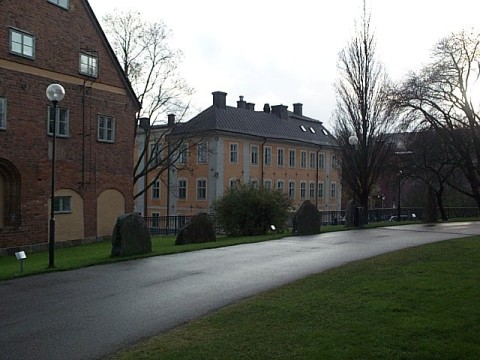
|
In Uppsala there are enough rune stones to keep me happy. These are just a few of them. There are a couple of stones inside the church too, partly visible. Rune stones were often found in church walls or floors: they were strong, solid stones. Blasting of stones in order to get good gravel has been known to happen. |
|